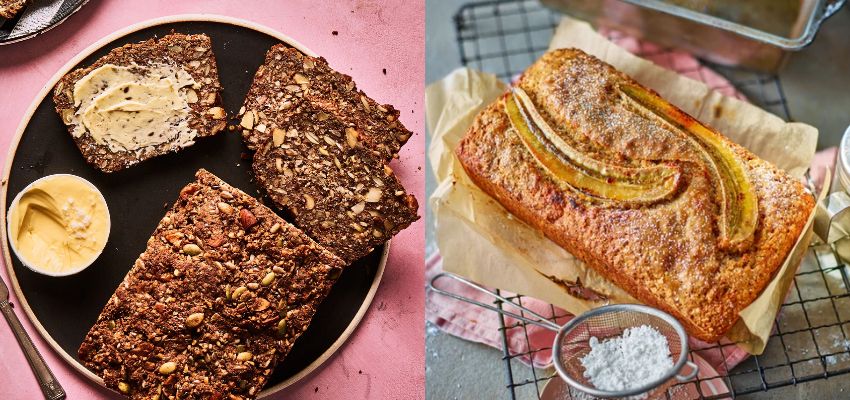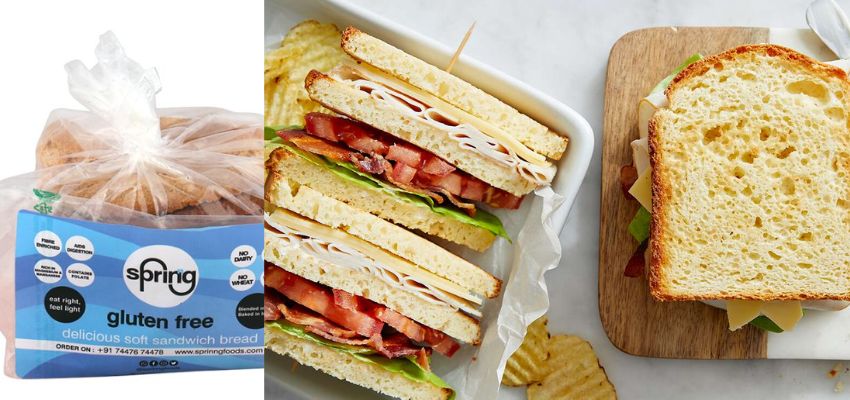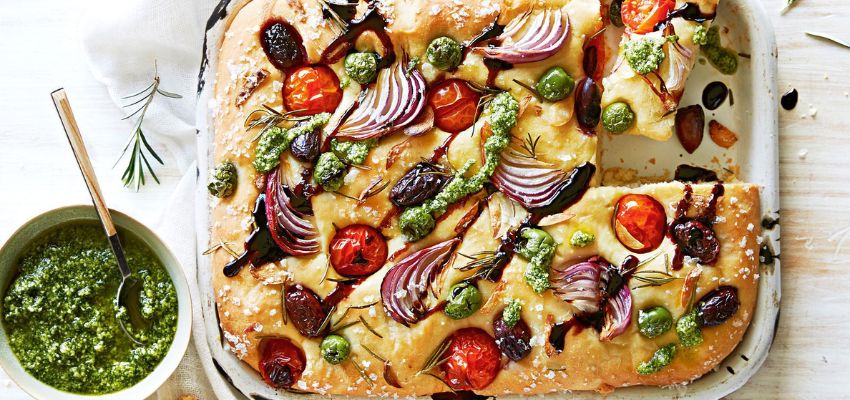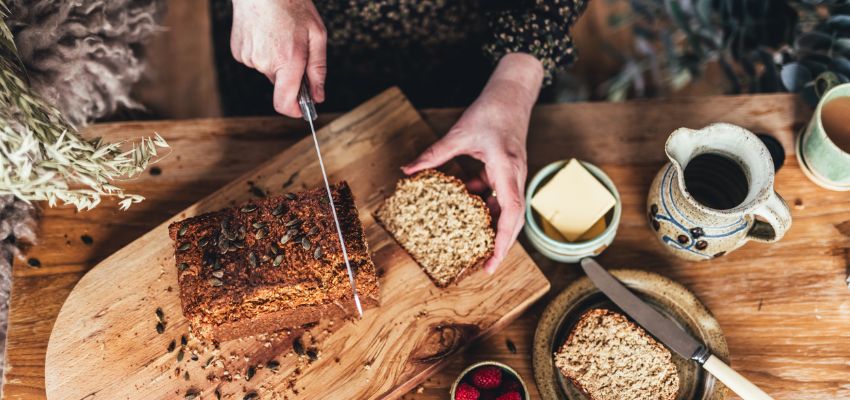Bread is a staple food in many cultures, but for individuals with gluten sensitivities or celiac disease, enjoying a simple slice of bread can be a challenge. Fortunately, the rise in popularity of gluten-free diets has led to an explosion of gluten-free bread options that are not only safe for consumption but also delicious and nutritious.
In this blog post, we’ll delve into the exciting world of gluten-free bread, exploring its benefits, ingredients, and some mouthwatering recipes that will satisfy even the most discerning bread lover.
Understanding Gluten and Gluten Sensitivity
Gluten is a protein found in wheat, barley, and rye. While most people can tolerate gluten without any issues, individuals with gluten sensitivity or celiac disease experience adverse reactions when consuming gluten-containing products.
These reactions can range from digestive discomfort to severe damage to the small intestine in the case of celiac disease.
Benefits of Gluten Free Bread
- Gluten-free bread provides a safe alternative for those who need to avoid gluten due to medical reasons. It allows them to enjoy bread without worrying about adverse reactions.
- Even individuals without gluten sensitivities may experience digestive benefits from reducing their gluten intake. Gluten-free bread is often easier to digest, as it is made from alternative grains and ingredients that are gentler on the stomach.
- Gluten-free bread is typically made with a combination of grains, legumes, and alternative flours, providing a wider range of nutrients compared to traditional wheat-based bread.
- Many gluten-free breads are fortified with vitamins and minerals to ensure they are just as nutritious as their gluten-containing counterparts.
Look for effective strategies for instant gas relief
Gluten Free Bread Ingredients
When it comes to gluten-free bread, there is a wide range of alternative ingredients that can be used to create delicious and satisfying loaves. Some common ingredients include:
Alternative Grains
- Rice
- Quinoa
- Corn
- Amaranth
- Buckwheat
- Millet
- Sorghum
Tired with stress or anxiety, see here benefits of ashwagandha a herbal remedy
Legume Flours
- Chickpea flour
- Lentil flour
- Bean flour
Nut and Seed Flours
- Almond flour
- Coconut flour
- Ground flaxseed
Binders
- Xanthan gum
- Guar gum
- Psyllium husk powder
Delicious Gluten-Free Bread Recipes
Classic Gluten-Free Sandwich Bread 
Ingredients
- 2 ½ cups gluten-free all-purpose flour blend
- 1 ½ teaspoons xanthan gum
- 1 ½ teaspoons active dry yeast
- 1 teaspoon salt
- 2 tablespoons sugar or honey
- 1 ¼ cups warm water
- 3 tablespoons vegetable oil
- 3 large eggs
How to Prepare
- In a mixing bowl, combine the gluten-free all-purpose flour blend, xanthan gum, yeast, salt, and sugar (or honey).
- In a separate bowl, whisk together the warm water, vegetable oil, and eggs.
- Add the wet ingredients to the dry ingredients and mix until well combined. The dough will be thick and sticky.
- Grease a loaf pan with cooking spray or oil.
- Transfer the dough to the greased loaf pan, using a wet spatula or wet hands to smooth the top.
- Cover the loaf pan with a clean kitchen towel and let the dough rise in a warm place for about 60-90 minutes, or until it has doubled in size.
- Preheat the oven while the dough is rising.
- Once the dough has risen, carefully place the loaf pan in the preheated oven. Bake for about 35-40 minutes or until the bread is golden brown and sounds hollow when tapped.
- Remove the bread from the oven and allow it to cool in the pan for a few minutes. Then transfer it to a wire rack to cool completely before slicing.
- Once cooled, slice the bread and enjoy it as a delicious gluten-free option for sandwiches or toast.
Why only opt for Gluten free bread, add Gluten free flour also in your diet…
Seeded Multigrain Bread
Ingredients
- 1 ½ cups gluten-free all-purpose flour blend
- ½ cup quinoa flour, millet flour, sorghum flour, flaxseeds
- ¼ cup sunflower seeds, pumpkin seeds, chia seeds
- 2 tablespoons sesame seeds, poppy seeds, xanthan gum
- 2 teaspoons active dry yeast
- 1 teaspoon salt
- 1 ½ cups warm water
- 2 tablespoons honey or maple syrup
- 2 tablespoons olive oil
- 3 large eggs
How to Prepare
- In a large mixing bowl, combine the gluten-free all-purpose flour blend, quinoa flour, millet flour, sorghum flour, ground flaxseed, sunflower seeds, pumpkin seeds, chia seeds, sesame seeds, poppy seeds, xanthan gum, yeast, and salt.
- In a separate bowl, whisk together the warm water, honey (or maple syrup), olive oil, and eggs.
- Add the wet ingredients to the dry ingredients and mix until well combined. The dough will be thick and sticky.
- Grease a loaf pan with cooking spray or oil.
- Transfer the dough to the greased loaf pan, using a wet spatula or wet hands to smooth the top.
- Cover the loaf pan with a clean kitchen towel and let the dough rise in a warm place for about 60-90 minutes, or until it has doubled in size. This rising time may vary depending on the temperature of your kitchen.
- Preheat the oven while the dough is rising.
- Once the dough has risen, carefully place the loaf pan in the preheated oven. Bake for about 40-45 minutes or until the bread is golden brown and sounds hollow when tapped.
- Remove the bread from the oven and allow it to cool in the pan for a few minutes. Then transfer it to a wire rack to cool completely before slicing.
- Once cooled, slice the bread and enjoy it as a delicious gluten-free multigrain option for sandwiches or toast.
Rosemary and Olive Focaccia
For those craving a savory treat, this gluten-free focaccia recipe combines aromatic rosemary, olives, and a blend of gluten-free flours to create a bread that pairs perfectly with soups and salads.
Ingredients
- 2 ½ cups gluten-free all-purpose flour blend
- 2 teaspoons instant yeast
- 1 teaspoon salt
- 1 teaspoon sugar
- 1 teaspoon dried rosemary
- 1 cup warm water
- 3 tablespoons olive oil, divided
- ½ cup pitted olives
- Fresh rosemary sprigs, for garnish
- Coarse sea salt, for sprinkling
How to Prepare
- In a mixing bowl, combine the gluten-free all-purpose flour blend, instant yeast, salt, sugar, and dried rosemary.
- Add warm water and 2 tablespoons of olive oil to the dry ingredients. Mix until well combined and a dough forms.
- Knead the dough in the bowl or on a lightly floured surface for about 5 minutes until it becomes smooth and elastic.
- Grease a baking sheet with 1 tablespoon of olive oil. Place the dough on the baking sheet and press it down with your hands to flatten it into a rectangle or oval shape, about ½ inch thick.
- Cover the dough with a clean kitchen towel and let it rise in a warm place for about 30-45 minutes, or until it has slightly puffed up.
- Preheat the oven while the dough is rising.

- Once the dough has risen, use your fingertips to create indentations all over the surface of the dough.
- Drizzle the remaining olive oil over the dough, allowing it to fill the indentations.
- Sprinkle the sliced olives evenly over the dough, gently pressing them into the surface.
- Sprinkle coarse sea salt and fresh rosemary sprigs on top for added flavor and garnish.
- Bake the focaccia in the preheated oven for about 20-25 minutes or until it turns golden brown and crispy on the edges.
- Remove the focaccia from the oven and let it cool for a few minutes before slicing.
- Serve the rosemary and olive focaccia warm as a delicious gluten-free bread option for dipping in olive oil or as a side with soups, salads, or main dishes
CONCLUSION
Gluten-free bread has come a long way in terms of taste, texture, and variety. Whether you have celiac disease, gluten sensitivity, or simply choose to follow a gluten-free diet, there are numerous delicious and nutritious bread options available.
Explore more – A comprehensive guide to wheat and its type